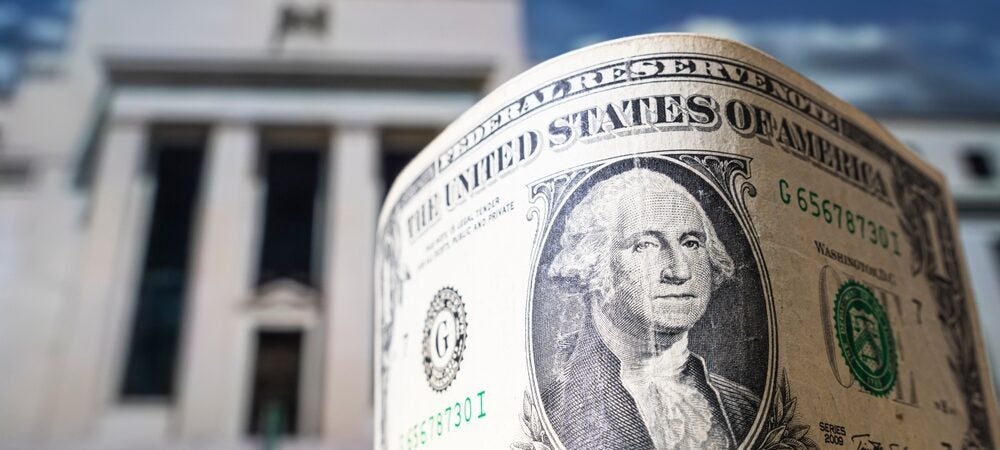With headlines dominated by geopolitical events, policymakers overlook the true threat to US success—the dollar as the world’s global reserve currency. As the anchor of the global economic order, America’s command over the world-reserve currency and dollar-denominated assets is unrivaled. The US dollar is the basis of international trade and investment, which gives America enormous global influence, promoting US commercial interests and universal principles like democratization and human rights.
American economic strength and dynamism allow the United States to extend its global influence through non-kinetic means, while also accruing additive benefits. The United States, despite its debt and political turmoil, remains attractive for foreign direct investment, immigration, and as a business partner. The United States has a well-earned reputation for a laissez-faire approach to private capital that has made it a global financial hub, sometimes to the chagrin of Congress as it seeks to ban some Chinese companies from listing in US markets.
In the current world order, capital moves across borders with few limitations. Steps taken to slow the flow of capital starve countries of investment and inflict costs on economic growth, employment, tourism, tech transfer, and global opportunities. The same would be true for the United States unless policymakers take economic statecraft seriously. The dollar provides America with a unique competitive advantage that the euro, yen, and yuan have yet to displace. That status is not a given though as domestic polarization (playing on fear) and financial and corporate interests (playing on greed) have the potential to erode USD status.
Policymakers are taking notice.
National Security Advisor Jake Sullivan’s April 27, 2023 speech provided a broad framework for economic statecraft as the avenue for renewal of America’s economic leadership. Unfortunately, it also led to concerns that poorly crafted or blunt-tool economic statecraft are likely to lead to bad policy, which ultimately serve to undermine the greenback and lead to further acceleration of de-dollarization. Concerns about de-dollarization in the near term are overblown, but that does not mean that those concerns shouldn’t be heeded. There are significant dollar shortages in African, South Asian, and South American emerging markets, leading them to trade in non-USD currencies.
Treasury has, at times, taken the lead, but efforts have been scattered across State, Commerce, US trade representatives, and other agencies. Congress and current and future administrations need a strategic perspective when they’re at the trade negotiating table. State is uniquely qualified for this role, but gets overshadowed by traditional conflicts unfolding in Europe, the Middle East, and Asia. Protecting the dollar should be at the center of US foreign policy since it sustains American prosperity and is a key aspect of the US-dominated rules-based order.
The risks to currency dominance are many: shifting balance of power among countries, reshaping the global economy and markets; reduced corporate, institutional, and investor demand for USD over time; heightened exchange rate volatility, especially as over sixty currencies are pegged to the USD; and rewriting the rules of the global financial system, which, under the leadership of the dollar, is guided by US values. If the USD were to lose reserve status, the United States would feel serious negative economic and political repercussions—losing capacity to borrow quickly and cheaply and damaging its ability to fund industrial policy, social welfare programs, and defense.
The US government has at its disposal an array of economic policies to incentivize or punish other countries through tariffs, sanctions, import and export controls, and investment restrictions, among other tools. The biggest threats to the dollar include sanctions and tariffs. Because of USD global dominance and US control over the Society for Worldwide Interbank Financial Telecommunications, sanctions are particularly low-hanging fruit for economic statecraft. They are an extremely important tool, particularly when used by the United States and its allies in multilateral coalitions acting together. But frequent unilateral usage of sanctions and overuse has led to more countries desiring an alternative currency, as countries become wary about being too dependent on the USD. The alliance of the aggrieved seek alternatives to sanctions including positive assistance to the injured party, as compared with reprisals against the aggressor or organizing logistical and financial aid to countries in distress.
Geoeconomic fragmentation and policy-driven reversal of global integration carry potential adverse economic ramifications that could hamper international cooperation and strain the international monetary system and financial safety nets. Unraveling trade links would most adversely impact low-income countries and less well-off consumers in advanced economies, and US sanctions and tariffs can accelerate fragmentation as countries perceive economic interdependence, particularly with the United States, a vulnerability as interdependence is weaponized.
Economic security is national security. Recent commentary on economic statecraft correctly identifies weaknesses in US national economic security priorities, lack of resources, staffing, and organizational design. Deputy National Security Adviser for International Economics, Daleep Singh, one of the primary architects of the Russian sanctions, highlights the necessity for economic statecraft to be grounded in doctrine that enhances global prosperity while safeguarding US national security. Employing economic coercion can be effective, but should be brought to the table with well-defined end goals and long-term ramifications in mind. Currently, there is no whole-of-government effort to counter Chinese and Russian de-dollarization schemes.
Janine Stouse has over twenty-five years of experience in the financial services sector and a Master’s in International Relations with a focus on National Security issues.
To read the analysis as it was published on the Foreign Policy Research Institute webpage, click here.

